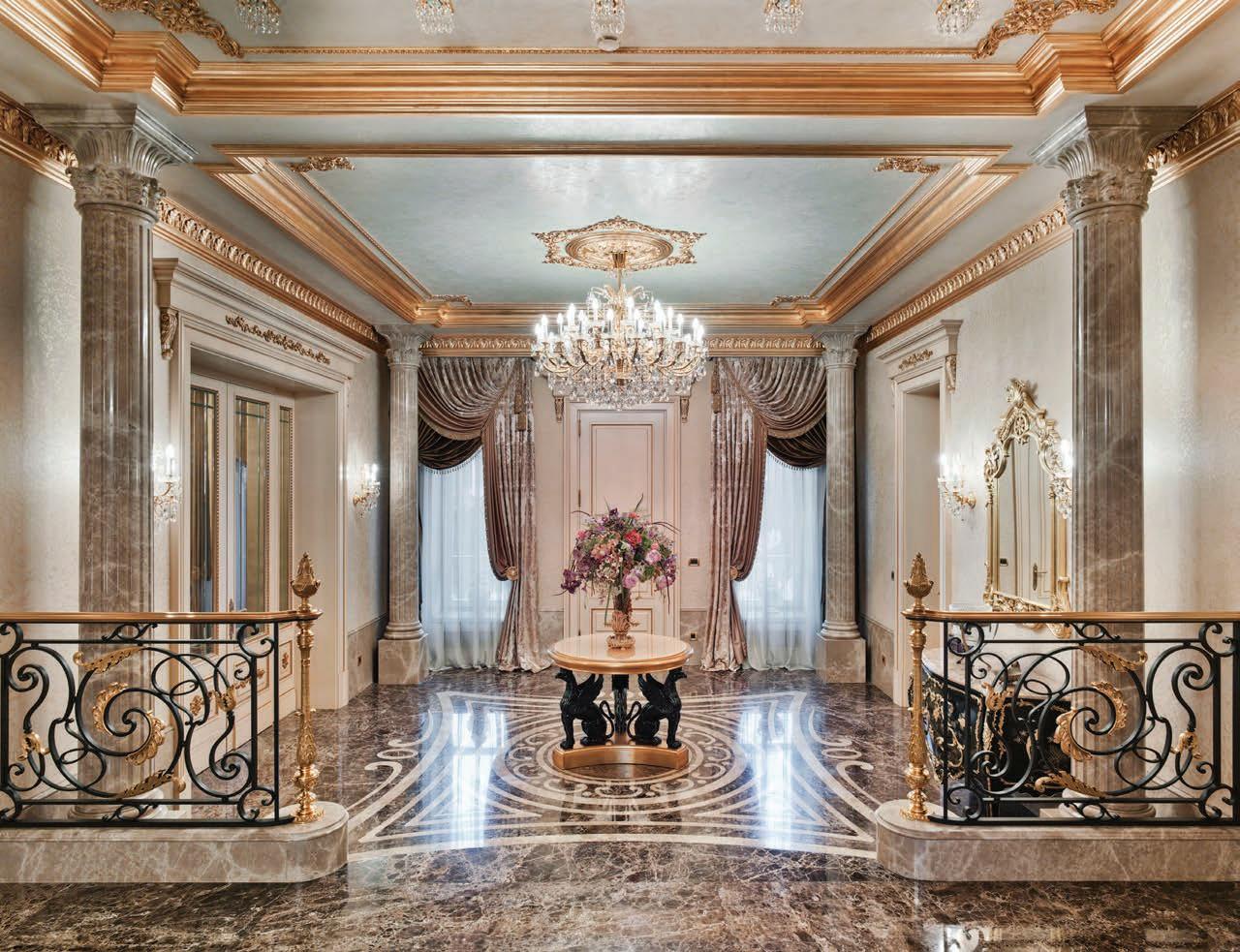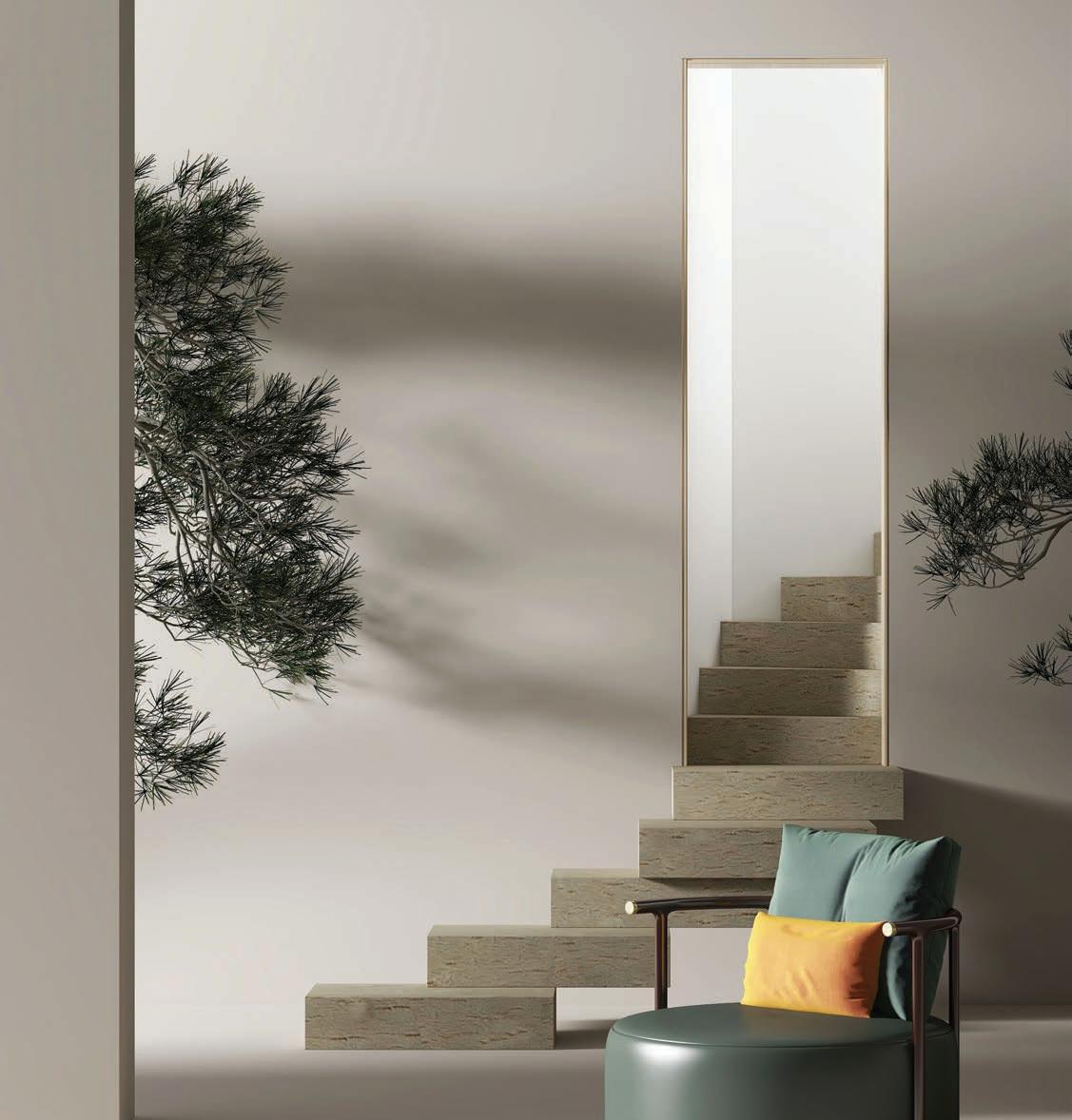
9 minute read
The Psychology of PRICING
When mortgage rates started to climb in late 2022, the market entered an adjustment period. Some buyers pulled out, leaving more inventory and less competition for those who remained. It also put downward pressure on pricing, causing price growth to slow down or, in some cases, even reverse course.
But market conditions only play a small role in what’s happening on the ground in today’s housing market.
According to agents, psychology – particularly on the side of sellers – is playing an increasingly important part, too. Often, it’s even a major barrier to selling a home successfully.
“Most homeowners saw significant gains in their home’s value over the pandemic and have naturally tuned their pricing expectations to 2020 and 2021, when record low inventory and bidding wars were the norm and caused prices to skyrocket,” said David Marine, Chief Marketing Officer for Coldwell Banker Real Estate LLC. “Those were record years, but those conditions just could not be sustained.”

When it comes time to sell their home, not all sellers have been ready to set realistic price tags on their homes, thus leading to longer days on market. In fact, according to our Vision Survey, 40% of our agents say “outdated expectations based on 2020 and 2021 market conditions” are the greatest challenge to selling a home this year.
What’s behind the psychology of pricing, and what can be done to help sellers move their mindsets forward this year? Let’s take a look.
20 23 Listing Chall Enges
Outdated selling expectations
Lack of replacement homes
Inaccurate Comparisons
Whereas the 2020-2021 markets were the hottest on record, driven by conditions the world has never seen before, today’s market is a more muted one – less volatile and more like the markets of pre-pandemic years (which were strong nonetheless).
“The market today offers a little more breathing room,” added Marine. “It’s not moving at the same breakneck speeds we saw a few years ago, but sellers still wield a lot of power. If they’d look back at the conditions of 2019, for example, they’d see they’re still in a great place to list.”
Another issue is the list vs. sale price dilemma. When browsing online listings, consumers only have access to the list price – which is often far higher than what a home actually sells for.

At the end of 2022, for instance, the median sale-priceto-list-price ratio (SP/LP%) average sat at 97% in the luxury market, meaning a home listed at $5 million actually sold for $4.85 million, per the Institute for Luxury Home Marketing. Monetarily, that’s a big difference, and it indicates quite the disparity between what sellers want for their homes and what buyers are prepared to offer.
“Any buyer’s agent is going to clue them into local sales price trends, so listing above-and-beyond what the market can support is rarely successful,” noted Liz Gehringer, President of Coldwell Banker Affiliate Business and Chief Operating Officer of Coldwell Banker Real Estate LLC, “Sellers should expect buyers to be informed and savvy –particularly as higher mortgage rates strain their budgets.”
Reference Dependence
Another problem is what a University of Pennsylvania study calls “reference dependence,” or the psychology of comparing what a seller paid for their home – the “reference” point – to what the home could potentially sell for.1
According to the study, homeowners are “loss averse,” meaning when they fear they may lose money on their sale (which many do when phrases like “recession” and “slowdown” are thrown around), they attempt to make up for it by basing their listing price on their original sale price – plus a hefty premium. As the premiums get bigger, the larger the perceived loss is.
“According to pure rational logic, the past sales price should not affect how you set your current list price,” says Li Liu, an assistant professor of finance at University of Pennsylvania’s Wharton School and one of the study’s authors. “Homeowners try to push the list price higher, just so they can offset that potential loss. We think of this as a psychological preference.”
“This psychological effect can play out big in the luxury market,” said Michael Altneu, Vice President of Global Luxury for Coldwell Banker Real Estate LLC. “With so much money on the line, many sellers may be tempted to demand exorbitant premiums that the market just doesn’t support.”

Personal Attachment And Perception Of Value
It’s also important to remember that, for luxury homeowners, selling a property isn’t just a numbers game. Emotion and a personal attachment to the property are involved, too – and that can impact one’s perception of value significantly.

“Many affluent sellers see their properties as unique, special properties that really stand out from the pack –and they expect to price them as such,” said Altneu. “If they’re notable people or in the public eye in some way, it can have even more of an impact on pricing.”
Uniqueness also plays a role in pricing luxury properties, especially when as you reach into the higher echelons of the market. But uniqueness is subjective – and assigning value to that uniqueness – can be especially challenging when there is no other comparable property.
“It has often been said that pricing luxury properties is both an art and a science, but once you move into the territory of trophy properties – those rarified, one-of-a-kind homes that are without peer – pricing becomes even more of an art form,” Altneu pointed out. “How do you accurately assign value when there’s nothing to compare it to?”

Prestige pricing could also play a role in some sellers’ hesitancy to be realistic on the value of their home. In luxury, high prices are expected – and there’s the idea that pricing lower, even slightly, could hurt sales and impact the overall view of the market. Sellers undoubtedly take this into account when pricing their properties and setting their expectations.
“An ultra-high price typically suggests ultra-high quality,” Altneu said. “It can often equate to exclusivity, too – like a one-in-a-million painting that can’t be replicated. Does it mean that painting or, in this case, property is actually worth that soaring price, though? That depends on who you ask.”
PATIENCE & UNDERSTANDING THE BUYER
To be clear: The seller is not the only one to blame. Buyers see headlines of price declines and market slowdowns, and they expect that bargain-basement deals are around the corner.
That’s far from the case these days, but psychologically, this mindset can take its toll on the home shopping process.
In fact, our Vision Survey found that almost 50% of agents see buyer expectations of “significant price declines” as the single biggest barrier to home buying this year. It’s even bigger than low inventory, according to agents.
20 23 Buying Chall Enges
“Those stats say a lot,” Gehringer said. “Buyers, like sellers, just haven’t caught up to reality of 2023 yet. That’s where the great agents are going to rise to the top – in educating and informing these consumers on the changing market.”
Understanding where buyers’ heads are at can help sellers better adjust their expectations, too. Most luxury buyers are purchasing out of want as opposed to need, and that offers them some discretion in the properties they consider, particularly when the market is less frenzied. They can take their time, view dozens of properties, and really wait it out until the ideal home comes along.

As Marine summed up, “Until this pricing disconnect between buyers and sellers is resolved, seller patience is going to be critical.”
The Outsized Influence of the TOP 20%
The top segment of high-net-worth (HNW) consumers are thought to generate the majority of all luxury sales. Is it true for luxury real estate? Our analysis of 10 prime U.S. markets from New York to Los Angeles, and Aspen in between, proves that the wealthiest spenders still carry the high-end residential market, in good times and in bad.

How The Ultra Wealthy Drive The Most Demand
Much has been made about the general resilience of luxury consumers in the face of economic challenges. But even more resilient is the highest tier of luxury consumer: the ultra-high-net-worth (UHNW) individual.
“Their extreme wealth has insulated them to the point that they would be the last to feel the effects of a 20% stock market correction or a 3 to 4% rise in interest rates,” said Milton Pedraza, CEO of the Luxury Institute. “They’re not immune, but they are super-resilient.”
This exotic luxury consumer tends to be very welldiversified with their investments and assets, preferring a mix of stocks, mutual funds, retirement accounts, and real estate – thus, exposing their tremendous fortunes to less risk. They likely own three or more homes, both in the U.S. and abroad. So much wealth has been created over the past two decades – especially over the course of 2020 and 2021 – that most experts expect ultrawealthy individuals to continue to flex their spending power despite economic uncertainty this year.
As Pedraza puts it: “The top 20% of wealthy consumers generate 70% of all luxury sales while the rest of the affluent consumer segment drives only about 30% of sales.” Or, in other words, the wealthiest of the wealthy will carry the overall luxury market. But is this true for real estate? And will it be the case for 2023 with all of its potential economic and geopolitical headwinds?
According to market data examined by the Institute for Luxury Home Marketing, the answer appears to be a general “yes” – with some key differences.

Small But Mighty
Almost 90% of all HNW individuals have a net worth of $1 million to $5 million, per Wealth-X. 2 That leaves only one in every 10 of the world’s millionaire population classed as a very-high-net-worth (VHNW) individual, with a net worth between $5 million and $30 million.
Comprising an even smaller piece of that pie are UHNW individuals, or those with $30 million+ in net worth. Emerging more recently within this elite millionaire circle is a fast-growing segment Forbes has dubbed “a new class of super-rich”: the centi-millionaire, or those who have at least US$100 million in investable assets. 3
According to Wealth-X data, the U.S. had the highest percentage of UNHW individuals at 127,800 at the end of 2022 – more than double China’s UNHW population and six times that of Germany’s. They hold more than $14,227.5 billion USD in wealth, giving them an outsized spending influence on assets such as real estate. Another study by Henley & Partners, a London-based investment migration consultancy, found that the U.S. had 9,730 centi-millionaires in 2022, accounting for 38% of the world’s total of 25,490. 4
These UHNW individuals are continuing to stay put in their favorite playgrounds – gravitating to places like New York, Los Angeles, London, as well as second home getaways like Palm Beach, the Hamptons, and Aspen. They demand absolute privacy, the highest quality, the best experiences, and the most exclusivity, especially when it comes to their real estate collections.

392,410
3,614,960
$41,824bn
$35,984bn
30,203,740 $56,593bn
The Cr Me De La Cr Me Of Luxury Real Estate
According to the National Association of Realtors (NAR), million-dollar sales (the NAR threshold for luxury) represented on average a 6.6% of all existing U.S. home sales in 2022, climbing as high as 7.9% in May 2022.5 This is a comparatively small amount when measured against the 27.8% represented by properties priced $500,000 and above. Still, that 6.6% was roughly double what it was in 2018, which had remained consistent since at least 2016.
Million-dollar sales may comprise a small percentage of the overall U.S. housing picture, but the very top of the luxury segment does most of the heavy lifting. During our review of 10 prime markets – those markets where the ultra-wealthy tend to own property, the top 20% represented about half of all luxury home sales in the last four months of 2022 on average.
Most dramatic was the tony Palm Beach area, where the top 20% represented almost 80% of all luxury home sales in 2022 – where the entry threshold price for luxury properties started at $1,460,000. Meanwhile the top 20% in Aspen – home to “Billionaire Mountain” – only represented 48% of all luxury home sales in 2022, but the price threshold was much higher at $23,500,000.
When you look at dollar volume, you see that the top 20% of the market in these destinations carries the local luxury sector. For example, the coastal communities of Connecticut – which include Greenwich, Darien, Westport, and Southport – ended 2022 with $4.9 billion in sales for the top 20% of the high-end market and that was more than half of all luxury home sales. But it’s the luxury capital of the world – New York – that shines when you look at the top 20% of luxury home sales. These sales alone in the Big Apple – generally anything over $4.3 million – drove a whopping $19 billion, per UrbanDigs, of the $33.5 billion in total sales volume for all 10 markets we reviewed, controlling about half of the entire local NYC luxury home market.
Leading The Way Forward
The 2023 luxury real estate story is still an open chapter waiting to be written.

Even if a true slowdown does occur, it is important to remember that the continued strength of the overall market is likely be driven by the powerful players at the very top. Lessons learned from past downturns support this view: the ultra-wealthy tend to lead. And so far, today’s wealthiest individuals appear to be leading by living well.
“There’s been a cultural shift after the pandemic and the ultra-wealthy feel less guilty about spending their money if it means they can have experiences to share with their families and friends,” said David Marine, Chief Marketing Officer of Coldwell Banker Real Estate, LLC. “It could mean more travel this year, but it could also mean a home in a new place. A home fulfills a few needs for them – financial, personal enjoyment, wellness, security.”









